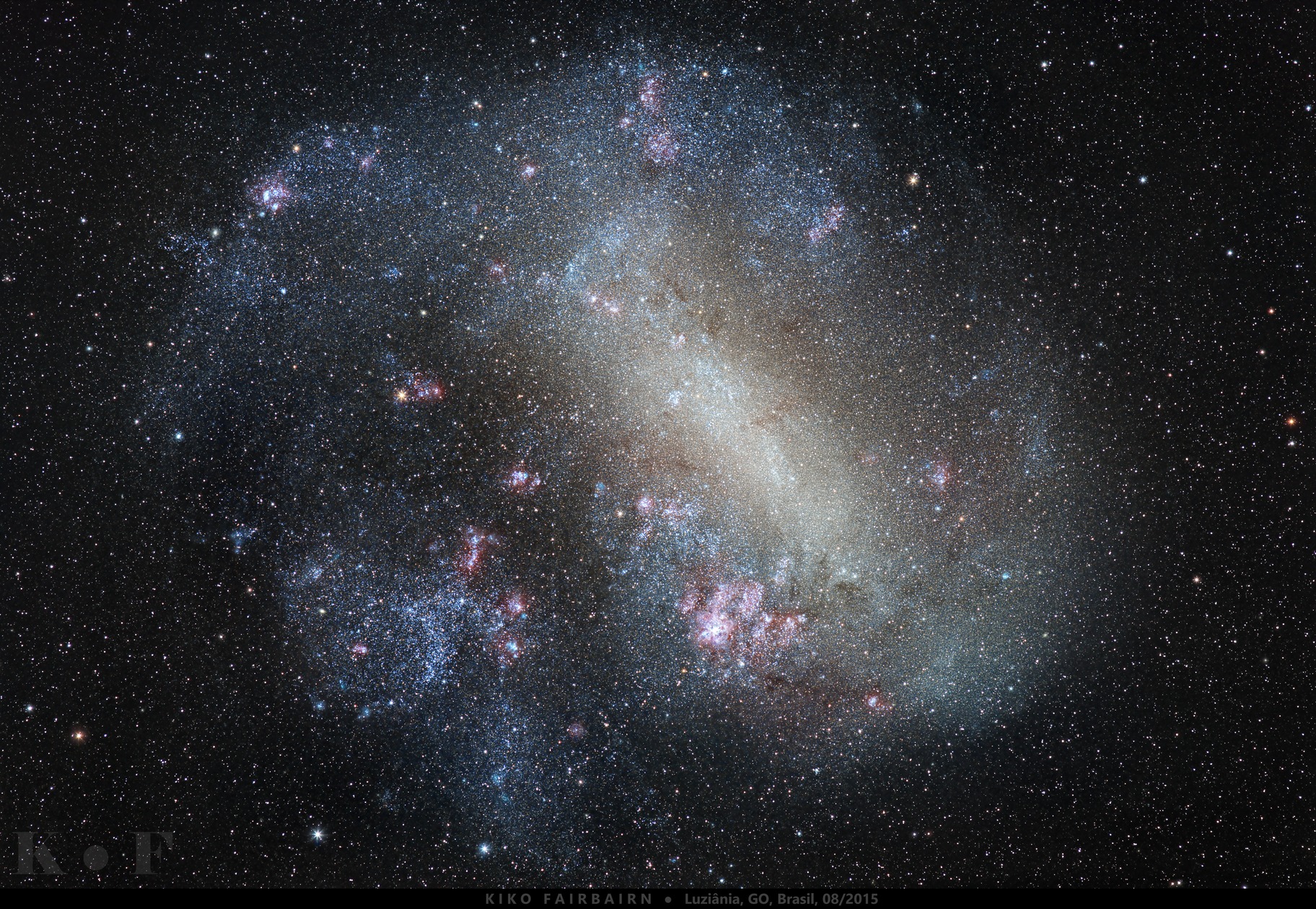
Copyright:Carlos
Fairbairn
原文:
The 16th century Portuguese navigator Ferdinand Magellan and his crew had plenty of time to study the southern sky during the first circumnavigation of planet Earth. As a result, two fuzzy cloud-like objects easily visible to southern hemisphere skygazers are known as the Clouds of Magellan, now understood to be satellite galaxies of our much larger, spiral Milky Way galaxy. About 160,000 light-years distant in the constellation Dorado, the Large Magellanic Cloud (LMC) is seen here in a remarkably deep, colorful, image. Spanning about 15,000 light-years or so, it is the most massive of the Milky Way’s satellite galaxies and is the home of the closest supernova in modern times, SN 1987A. The prominent patch below center is 30 Doradus, also known as the magnificent Tarantula Nebula, is a giant star-forming region about 1,000 light-years across.
中文翻譯:
在16世紀,葡萄牙航海家費迪南德·麥哲倫(Ferdinand Magellan)和他的船員們有足夠的時間觀察南半球的天空,首次環繞地球航行時,他們發現了兩個模糊的雲狀天體,這些物體至今被稱為麥哲倫雲(Clouds of Magellan),現已被了解為我們這個更大螺旋形銀河系的衛星星系。大型麥哲倫雲(Large Magellanic Cloud,LMC)位於多拉多座(Dorado),距離地球約160,000光年,這裡呈現出一幅色彩斑斕、極其深邃的影像。大型麥哲倫雲的直徑大約為15,000光年,是銀河系最大且最重的衛星星系,也是近代最靠近的超新星SN 1987A的故鄉。畫面下方中央突出的位置是30 Doradus,也被稱為壯觀的塔蘭圖拉星雲(Tarantula Nebula),這是一個直徑約1,000光年的巨大恆星形成區。
#麥哲倫雲 #大型麥哲倫雲 #星雲 #天文 #天文學 #環繞地球 #費迪南德麥哲倫 #塔蘭圖拉星雲 #星系探險 #夜空之美
來源:NASA每日圖片


